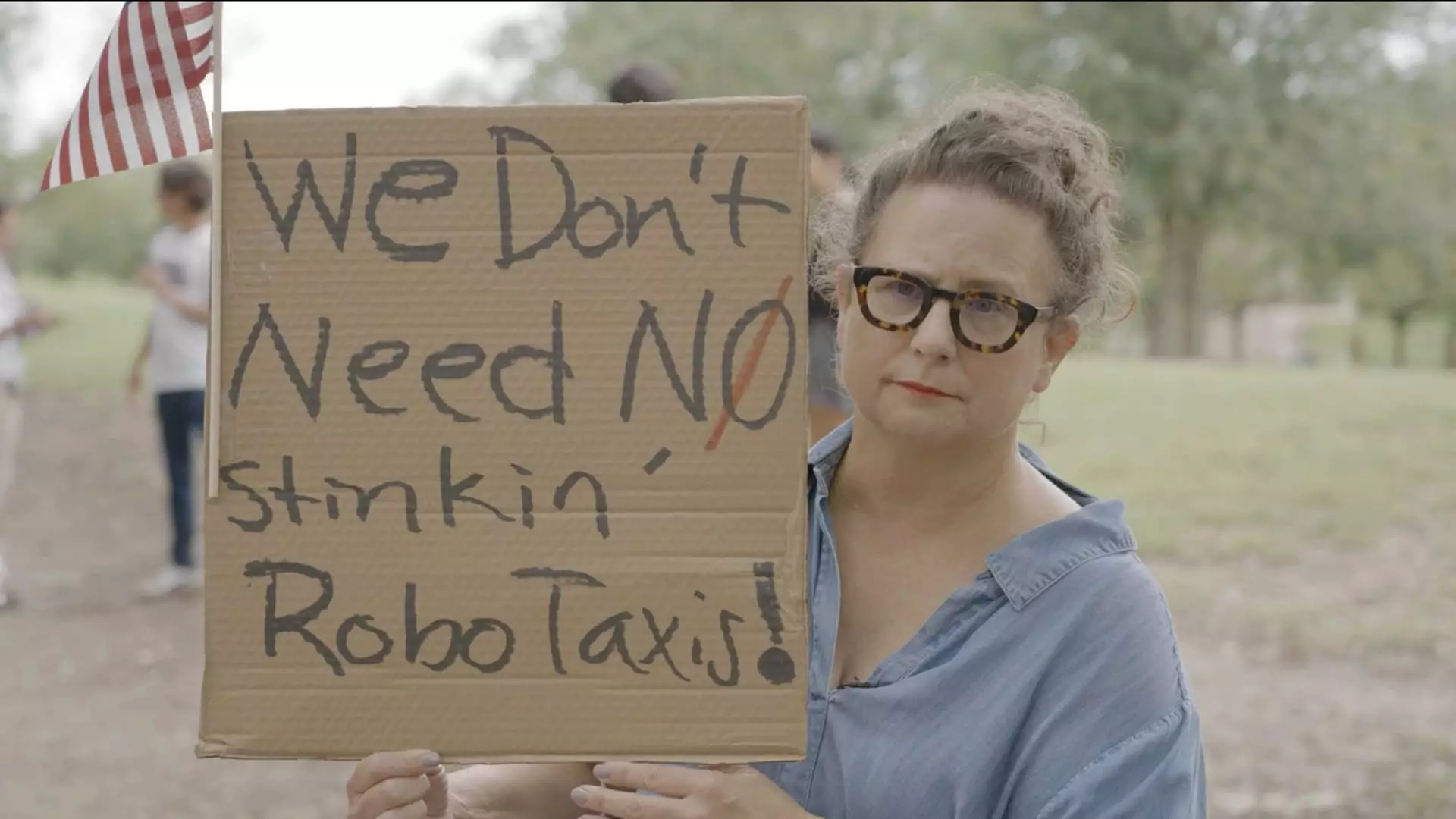As Elon Musk unveils plans for Tesla’s highly anticipated robotaxi service, scheduled to kick off tentatively on June 22 in Austin, Texas, a wave of public dissent and concern cascades through the community. Protests erupt as citizens voice urgent calls for scrutiny regarding the safety ramifications of a technology still teetering on the edge of acceptance. In an age defined by innovation, the question begs: are we rushing into an era of automation without ensuring the vital safeguard of public safety?
The Fears Behind the Protests
Amidst the buzz around Tesla’s ambitious project, groups such as the Dawn Project and Tesla Takedown have mobilized to challenge Musk’s narrative. Their dissent is more than political; it is rooted in genuine concerns for the well-being of passengers and pedestrians alike. With the vehicles in question equipped with partially automated driving systems—like Autopilot and the controversial Full Self-Driving (FSD) feature—it’s essential to recognize the troubling statistics: numerous collisions have already resulted in fatalities, highlighting a glaring gap in the technology’s safety record. Protests in Austin are not emblematic of anti-innovation sentiment but rather a demand for accountability and rigorous testing standards.
Spotlight on Inadequate Transparency
Critics have raised eyebrows over Tesla’s transparency—or lack thereof—regarding the operational efficacy and safety of robotaxis. Stephanie Gomez, a protester, aptly encapsulated the sentiment echoing through the crowd, expressing discomfort regarding Musk’s entanglements with political figures and a lack of publically accessible safety testing data. It’s a disturbing thought: that citizens are expected to embrace this unproven technology without comprehensively understanding its implications. Within the framework of free-market liberalism, there’s a pressing need for companies like Tesla to not only innovate but to do so with an unwavering commitment to public safety.
A Case Study in Ethical Responsibility
The recent demonstrations included chilling real-life simulations showcasing the potential hazards of Tesla’s current FSD capabilities, where a vehicle deliberately bypassed a stop sign and struck a child-sized mannequin. These vivid portrayals challenge the notion of automated vehicles as a mere convenience; they illuminate the profound ethical responsibility that creators must uphold. How can we justify adopting such technology when the risk of endangering lives is so palpable? Ethical considerations must remain at the forefront of technological advancements; otherwise, we risk becoming complicit in a cycle of negligence masked as progress.
The Intersection of Innovation and Accountability
While technological advancement is vital for societal progress, it must not overshadow the responsibility that accompanies it. The demonstration conducted by the Dawn Project, although provocative, served as a crucial reminder that innovation without accountability could lead to dire consequences. As Musk stands at the helm of self-driving technology, the broader implications of these innovations go far beyond the boardroom; they ripple through communities where lives hang in the balance. In the quest to position ourselves at the forefront of technological innovation, let us not compromise the essential tenet of safety. The road to innovation must be paved with responsibility, not recklessness.

